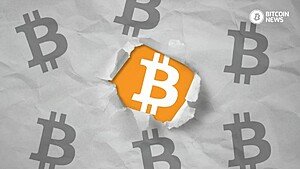Richard Cantillon was a French economist who is widely regarded as one of the pioneers of modern economics. Born in the early 18th century, Cantillon was a contemporary of other famous economists such as Adam Smith and Jean-Baptiste Say. Despite his significant contributions to the field of economics, Cantillon remains relatively unknown compared to his contemporaries, largely due to the fact that his work was not published during his lifetime.
Cantillon was born into a wealthy family in the French countryside and received a classical education in Paris. As a young man, he moved to London where he became involved in banking and finance. It was during this time that he began to develop his economic theories, which were heavily influenced by the mercantilist ideology of the time.
What Is The Cantillon Effect?
One of Cantillon’s most important contributions to economics was his theory of the Cantillon Effect, which described the way in which changes in the supply of money can affect the distribution of wealth in an economy. According to Cantillon, the first recipients of newly-minted money benefit the most, while those who receive the money later on are disadvantaged.

The Cantillon Effect is based on the idea that when the central bank increases the supply of money, the new money tends to flow first to those who are closest to the source of the new money, such as banks and financial institutions. These early recipients of the new money are able to use it to purchase goods and assets at their current prices, before the increased money supply causes prices to rise. As a result, the early recipients of the new money are able to purchase goods and assets at a discounted price, while those who receive the money later on are forced to pay higher prices.
This process leads to a redistribution of wealth, with the early recipients of the new money becoming wealthier, while those who receive the money later on become poorer. This is known as the Cantillon Effect.
In addition to his work on the Cantillon Effect, Cantillon also made significant contributions to the field of economics through his analysis of the role of entrepreneurship in the economy. According to Cantillon, entrepreneurs play a vital role in the economy by taking on the risk of introducing new products or technologies, and by coordinating the production and distribution of goods and services.
Despite his contributions to economics, Cantillon’s work was not widely known during his lifetime. His most famous work, “Essai sur la Nature du Commerce en Général,” was not published until after his death, and it was not until the 20th century that his contributions to economics were widely recognized. Today, Cantillon is remembered as one of the pioneers of modern economics, and his work continues to be studied and debated by economists around the world.
It may come as a surprise to you that the United States has been financing a welfare program that takes money from the poor and gives it to the rich.
Inflation as a Policy Tool
If you read a lot of modern macroeconomic literature or major in economics in college, you’ll hear economists talk of the “multiplier effect” of monetary and fiscal stimulus.
In times of economic slump, money injection (for monetary policy) or government spending (fiscal policy) greases the wheels of our complex economic machine, bringing unemployment down and output up.
Changing the supply of money in the economy to manipulate relative price levels doesn’t actually change anything in the long run.
In response to these policy proposals to change the level of unemployment or production, “real” metrics of the economy, Milton Friedman argued that money is “neutral.”
In other words, changing the supply of money in the economy to manipulate relative price levels doesn’t actually change anything in the long run.
When people realize their money is worth less than before, they adjust their mindset, demanding higher wages for higher prices. After these changes are made, unemployment and production end up in the same place as before.
While Friedman’s argument sheds light on many failed economic policies from the latter half of the 20th century, it doesn’t explain the mechanics behind rising price levels (from inflationary policy) once the newly created money travels through the economy, sector by sector.

Contextualizing the Cantillon Effect
Richard Cantillon first suggested in 1755 that money is not as neutral as we think. He argued that money injection—what we could consider inflationary policies—may not change an economy’s output over the long-term.
However, the process of readjustment affects different sectors of the economy differently. This analysis, known as the Cantillon Effect, serves as the foundation for the non-neutrality of money theories. In our modern economy, the Cantillon Effect is at play with a stratified socioeconomic impact, favoring investors over wage-earners.
Cantillon’s original thesis outlines how rising prices affect different sectors at different times and suggests that time difference effectively acts as a taxing mechanism. In other words, the first sectors to receive the newly created money enjoy higher profits as their pay increases, but general costs are still low.
On the other hand, the last sectors in which prices rise (where there is more economic friction) face higher costs while still producing at lower prices. Because, as Friedman taught us, the real economic variables are still the same in the long run, the price of inflation is paid for by a “tax” on the sectors with more friction, which subsidizes more time-responsive sectors.
In our modern economy, the Cantillon Effect is at play with a stratified socioeconomic impact, favoring investors over wage-earners. For Example Let’s say the Fed decides to lower interest rates (by expanding the supply of money in the economy).
Soon after the Fed makes its announcement, investors anticipate new earnings from increased investment. In fact, once even a few people get wind of the Fed’s intentions, investors expect prices to rise, whether they rely on algorithms or rumors for their information. Investors flock to the financial markets, hoping to get there first; if they can buy stocks while the prices are still low, they can reap enormous profits once prices rise.
However, the sudden increased demand for stocks in the financial market bids up asset prices, and this happens rapidly. Within minutes—seconds, even—the expected increase in the price level has been factored into the financial markets. The first place where “inflation” is felt is in the financial marketplace.
This means that people who are most invested in the market are the first to benefit from inflation. This means that people who are most invested in the market are the first to benefit from inflation. They see their asset prices increasing, yet the prices in the rest of the economy are still low because this happens seconds after it’s clear the Fed is inflating the money supply.

While the companies with investors buying up shares see the increased inflow of cash, they also have new investment opportunities because of lower interest rates from inflation. Both of these factors help their profits rise, and they find ways to continue expanding business (by increasing their purchases of intermediate goods).
The first few businesses to turn their profits into production benefit from lower prices, but once other companies start demanding more intermediate goods, their prices start to rise. Thus, the intermediate goods sector, which includes raw materials and technology that facilitates business, is the next to experience rising price levels.
Companies that primarily sell these intermediate goods now have more profit, but the rest of the prices in the economy are still relatively low. When prices are higher throughout the economy, the last to benefit are workers. Afterward, these higher-priced intermediate goods increase the costs of business operations and production, so final goods (for consumers) begin to rise in price, as well. The companies that can turn around their initial investments to final goods the quickest have the most to gain.
But there’s more. When prices are higher throughout the economy, the last to benefit are workers, who see an increased cost of living and factor this cost into their wage demands. Even among workers, wage-earners are the worst off, for many salaried employees anticipate inflation and factor it into their contracts. And with that, the inflationary policy has passed through the economic system, raising prices. And, as Friedman said, the policy—in the long run—doesn’t change real factors.
A Regressive Tax?
In the modern financial system, the current realization of the Cantillon Effect looks quite similar to a regressive tax.
The first to benefit are often corporations with plenty of investors, whether publicly traded or financed through private equity. Next, raw goods benefit from increased prices, including already heavily subsidized industries such as steel and aluminum.
Technology also benefits, for it is utilized as an intermediate good for many companies. Even within the raw goods and technology sectors, the quickest corporations to turn investments into production—larger corporations like Amazon or Microsoft, which have the infrastructure to expand—benefit disproportionately.
Any inflationary monetary policy regime suffers from the ramifications of the Cantillon Effect. On the consumer side, people investing most of their savings in the stock market benefit from increased investment bidding up prices.
On the other hand, individuals living from paycheck to paycheck, or even those who just have a savings account in a bank, lose money to price increases. Nonetheless, policymakers neglect these effects in an effort to rein in the economy without considering the consequences of their actions.
Often, they justify surprise inflation by claiming it will “help the poor.” However, any inflationary monetary policy regime suffers from the ramifications of the Cantillon Effect. In fact, even a price-stable economy requires money injection to counter the deflationary effects of growth. This money injection may keep prices for real goods stable, but asset prices continue to rise. It’s true that most economists accept a low level of inflation as fine—healthy, even.
But when our current expansionary system, however well-intentioned, ends up exacerbating inequalities in the marketplace under the pretense of egalitarian stability, we ought to examine its true consequences more thoroughly.










